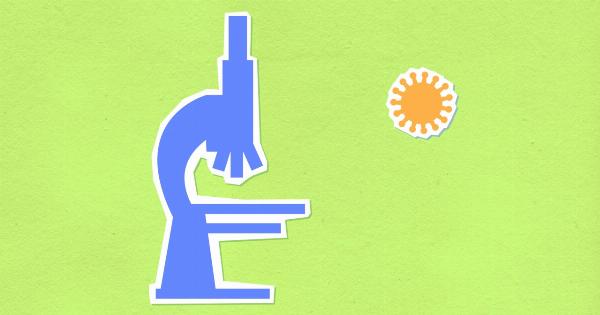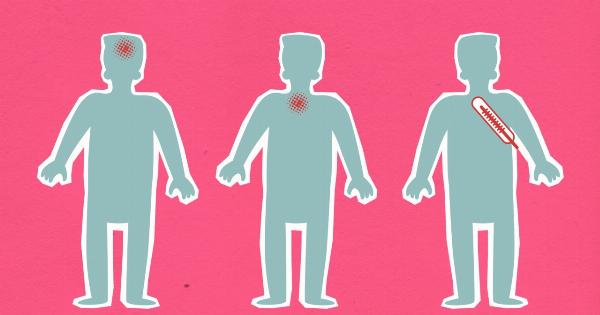Colds and sinusitis are two common conditions that often get mistaken for one another due to their similar symptoms. Both can cause nasal congestion, runny nose, and facial pressure, but they are different illnesses with distinct causes and treatments.
In this article, we will help clear up the confusion between sinusitis and colds, highlighting their differences and how to differentiate between them.
What is Sinusitis?
Sinusitis, also known as a sinus infection, occurs when the sinuses, which are air-filled spaces behind the cheekbones, forehead, and eyes, become inflamed or infected.
It is usually caused by a virus, bacteria, or fungi, and can last for several weeks if not properly treated.
What Causes Colds?
A cold, on the other hand, is a viral infection that primarily affects the nose and throat.
It is caused by a variety of viruses, such as rhinovirus or coronavirus, and can be easily transmitted from person to person through respiratory droplets or direct contact with infected surfaces.
Symptoms of Sinusitis
The symptoms of sinusitis usually last longer than those of a cold and can include:.
- Nasal congestion and discharge
- Facial pain or pressure
- Coughing
- Headache
- Fever
- Bad breath
- Tooth pain
Symptoms of Colds
Cold symptoms commonly include:.
- Runny or stuffy nose
- Sneezing
- Sore throat
- Mild headache
- Coughing
- Mild fatigue
Differentiating between Sinusitis and Colds
While the symptoms of sinusitis and a cold can overlap, there are a few key differences that can help differentiate between the two:.
- Duration: Sinusitis typically lasts for more than 10 days, whereas a cold often resolves within 7-10 days.
- Severity: Sinusitis symptoms are usually more severe and can significantly impact daily activities, while cold symptoms are generally milder.
- Discharge color: Sinusitis commonly presents with thick yellow or green nasal discharge, while a cold may have clear or whitish discharge.
- Facial pain or pressure: Sinusitis often causes localized facial pain or pressure, while a cold primarily affects the nasal passages.
Treatment Options
When it comes to treatment, there are some variations between sinusitis and colds:.
Treating Sinusitis
If sinusitis is caused by a bacterial infection, a doctor may prescribe antibiotics to clear the infection. However, if the underlying cause is a viral infection, antibiotics won’t be effective, and treatment focuses on relieving symptoms.
This can include over-the-counter nasal decongestants, nasal irrigation, pain relievers, and warm compresses.
Treating Colds
Since colds are viral infections, antibiotics will not help. Treatment typically involves rest, hydration, over-the-counter pain relievers, nasal decongestants, and saline nasal sprays to alleviate symptoms.
It is also important to practice good hygiene, such as washing hands regularly and avoiding close contact with others to prevent the spread of the virus.
Prevention
Both sinusitis and colds can be prevented to some extent:.
Preventing Sinusitis
To reduce the risk of sinus infections, it is essential to maintain good nasal hygiene. This includes using a saline nasal rinse, avoiding irritants like cigarette smoke, and staying hydrated.
It is also advisable to treat allergies promptly and avoid excessive use of nasal decongestant sprays.
Preventing Colds
Colds are highly contagious, but some preventive measures can help reduce the risk of catching or spreading the virus.
These include regular handwashing, avoiding close contact with infected individuals, keeping common surfaces clean, and practicing good respiratory hygiene, such as covering the mouth and nose when sneezing or coughing.
When to See a Doctor
In most cases, sinusitis and colds resolve on their own with proper self-care. However, medical attention may be necessary in certain situations:.
- If symptoms worsen or persist for more than 10 days
- If there are severe sinus pain, swelling, or redness around the eyes
- If high fever (>101°F or 38.3°C) develops
- If there is blood in nasal discharge
- If cold symptoms worsen after a week or persist for more than two weeks
Conclusion
While sinusitis and colds share some common symptoms, they are distinct conditions with different causes and treatment approaches. Sinusitis is an inflammation or infection of the sinuses, often caused by viruses, bacteria, or fungi.
Colds, on the other hand, are viral infections primarily affecting the nose and throat.
Understanding the differences can help individuals better identify their symptoms and seek appropriate treatment. When in doubt, it is always advisable to consult a healthcare professional for an accurate diagnosis and appropriate management.



























